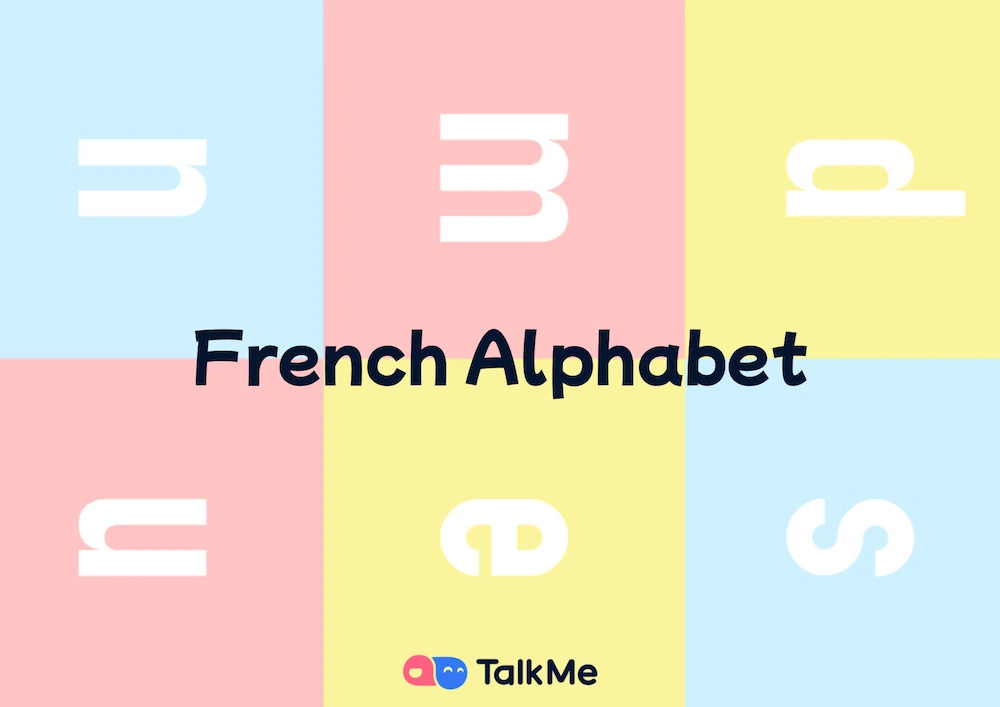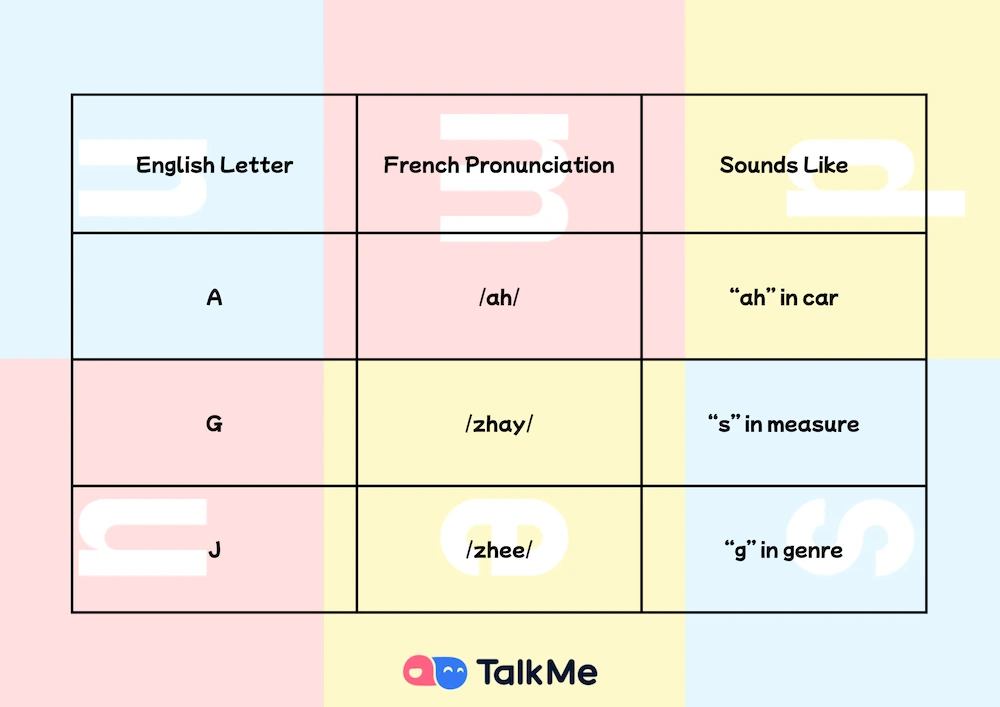Learning the French alphabet is the foundation of mastering the French language. Whether you’re aiming to speak fluently, write emails in French, or simply improve your accent, knowing the alphabet is a crucial first step. But for many non-native learners, this seemingly simple task brings surprising challenges—especially when it comes to pronunciation, spellinget listening comprehension.

Unlike English, many French letters don’t sound how they look. For instance, the letter G sounds like “J” in English, while J sounds like “G.” Add in the French-specific vowels and nasal sounds, and it’s no surprise learners struggle. But with the right tools and practice, mastering the French alphabet becomes not only doable but enjoyable.
What Is the French Alphabet?
Le French alphabet contains 26 letters, just like English. However, some elements make it uniquely French:
- Ligatures: French occasionally uses combined letters like æ et œ, mostly in borrowed or older words (e.g., cœur, curriculum vitæ).
- Capitalization: Letters come in lowercase (minuscules) et uppercase (majuscules), and capitalization rules differ slightly from English.
- Different Letter Pronunciations: While the letters look familiar, many sound distinctly different.
Here’s a simple comparison:

So while the French alphabet matches English in form, the sound and usage require special attention.
Why Learn the French Alphabet as an Adult?
As an adult learner, you’re probably not singing ABC songs in kindergarten—but that doesn’t mean the alphabet isn’t essential. Here’s why mastering it is a game changer:
- Boost Your Pronunciation: French spelling is deeply tied to how words are pronounced.
- Decode French Spelling Rules: Knowing how letters behave helps you read and write accurately.
- Spell Names and Addresses: Whether giving your name over the phone or filling out paperwork, you’ll often need to say the French alphabet aloud.
- Sharpen Your Listening Skills: Recognizing individual letters helps you catch words in conversations or spelling contexts.
From hotel check-ins to customer service calls, having the alphabet at your fingertips is incredibly useful in daily life.
How to Pronounce the French Alphabet Correctly
Let’s dive into how each letter sounds in French—starting with vowels, then consonants.
a. French Vowels
Vowels are especially tricky, so focus on mastering them first.

b. French Consonants
Some consonants sound familiar; others don’t.
- Same as English: B, D, F, K, L, M, N, P, Q, S, T, V, Z
- With a French twist:
- C = /say/
- G = /zhay/
- H = /ash/ (silent in words)
- J = /zhee/
- R = /air/ (guttural, not rolled)
Tip: The most common learner mistake is mixing up G et J because they’re reversed from English!
French Accents and Diacritics
French is famous for its accents, which change how letters are pronounced. Here’s a breakdown:
- é (accent aigu): sounds like “ay” – école (school)
- è (accent grave): more open “eh” – père (father)
- ê (accent circonflexe): usually lengthens vowel – forêt (forest)
- ë (tréma): indicates vowel separation – Noël
- ç (cedilla): softens “c” to an “s” sound – garçon (boy)
Ignoring accents can change a word’s pronunciation—and meaning. For example, sœur (sister) and soeur are pronounced differently. Accents matter!
How to Say the French Alphabet Aloud
When spelling out words or your name in French, you’ll need to say each letter clearly. Here are a few tips:
- Stretch the vowel sounds: Most French letters end with a vowel sound (e.g., bé, cé, dé).
- Slow down and articulate: French letters can sound similar, so clarity is key.
- Practice common spelling words: Try spelling your name, email address, or city out loud in French.
Auditory learners can benefit from alphabet videos or apps that let you hear and repeat the letters. Listening is just as important as speaking!
Practice with the French Alphabet Song
A classic way to memorize the French alphabet is through the French alphabet song. Like its English counterpart, it uses rhythm and melody to aid memory.
But don’t expect a direct translation of the “A-B-C” song! The French version often follows a slightly different tune to accommodate syllables.
Recommended Resource: YouTube and apps like TalkMe AI provide audio examples with repeat-after-me functions to reinforce the French alphabet pronunciation.
French Letter Meanings in Context
Some French letters or combinations change their behavior depending on the word.
| Example | Signification | Note |
| ou vs. u | bouche (mouth) vs. bûche (log) | “ou” = /oo/, “u” = /ü/ |
| œ vs. e | cœur (heart) vs. peur (fear) | œ = like “uh” with rounded lips |
Understanding these subtle differences can elevate your comprehension and pronunciation dramatically. These aren’t just letters—they’re sound systems!
7 Trickiest French Letters and How to Master Them
Let’s tackle the most challenging letters for non-natives:
- E: Varies widely—sometimes silent, sometimes /uh/
- G: Soft “zh” before E or I, hard “g” elsewhere
- I: Always /ee/, unlike English “eye”
- J: /zhee/—opposite of English J
- U: Rounded “ee”—not in English, requires practice
- Y: Called i-grec, used mainly in foreign words
- Œ: Found in words like sœur, cœur; soft “uh”
Practice tip: Use tongue twisters or sentence drills with TalkMe AI to hear and mimic these sounds in context.
Learn the French Alphabet with TalkMe AI
Mastering the French alphabet is easier than ever with TalkMe AI—your personal AI tutor designed for language learners.
learn french with talkme
Pourquoi choisir TalkMe AI ?
- 🎧 Instant Pronunciation Feedback: Say a letter or word and get real-time corrections.
- 🗣️ Role-Play Spelling Exercises: Simulate real-life situations like giving your name over the phone.
- 🔁 AI-Guided Repetition: Repeat tough letters until you get them right.
- 📈 Personalized Learning Paths: TalkMe adjusts to your level, focusing on what you struggle with most.
- 🎤 Conversational & Interactive: Unlike static apps, you’re always speaking, listening, and improving.
Whether you’re just starting or brushing up your basics, TalkMe AI makes mastering the French alphabet engaging and effective.
Best Tips for Mastering the Alphabet Faster
Looking for ways to make progress quickly? Try these tips:
- Use Visual Mnemonics: Associate letters with images or scenes to aid memory.
- Practice Daily for 10 Minutes: Short, consistent sessions are more effective than long, infrequent ones.
- Shadow Native Speakers: Repeat after recordings with correct intonation.
- Sing the Alphabet Song: Helps with rhythm and memory.
- Use TalkMe AI: Combine it with other tools like Busuu or LingQ for a more immersive experience.
Réflexions finales
Le French alphabet is your gateway to speaking, reading, and understanding French confidently. From pronunciation to listening skills to real-life communication, the alphabet forms the building blocks of your language journey.
With consistent practice and the help of tools like TalkMe AI, you’ll soon find yourself spelling words aloud, recognizing sounds in conversation, and mastering even the trickiest French letters.
Start learning today with TalkMe AI—your friendly, always-available tutor that helps you say the French alphabet clearly, confidently, and correctly.


